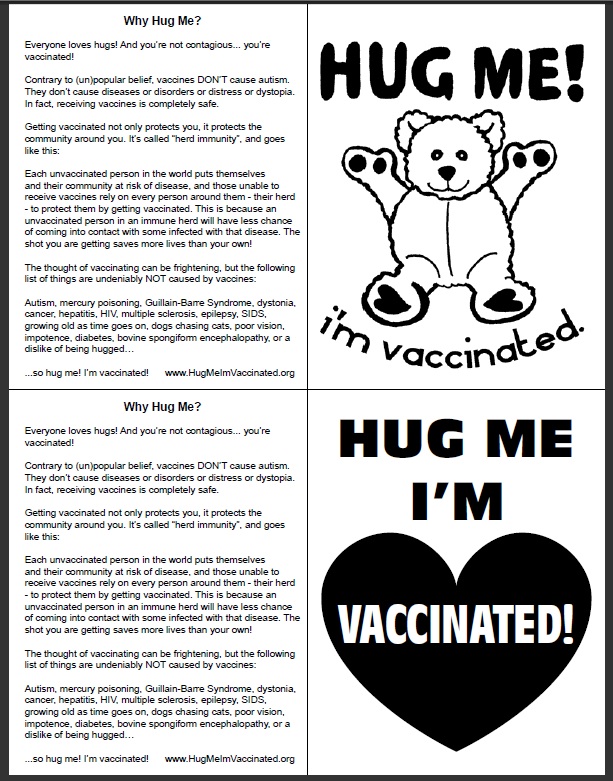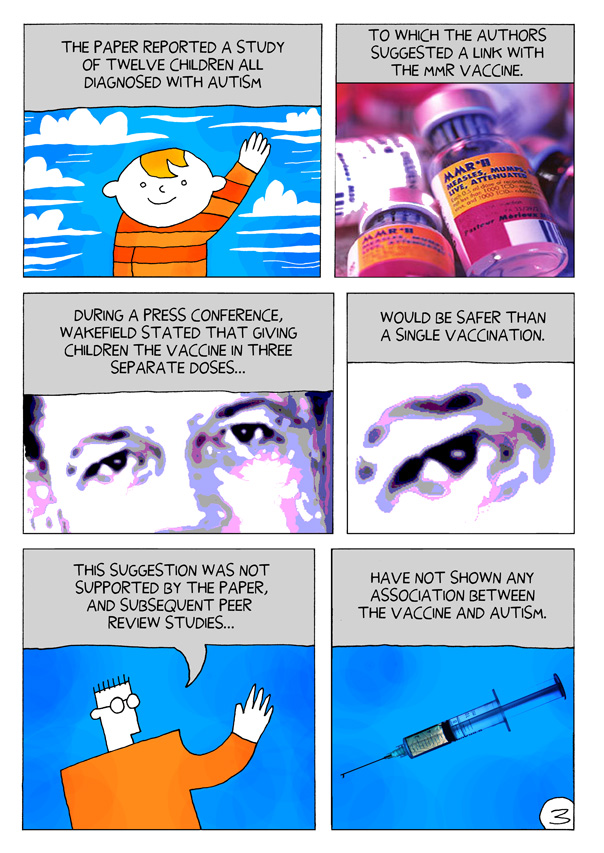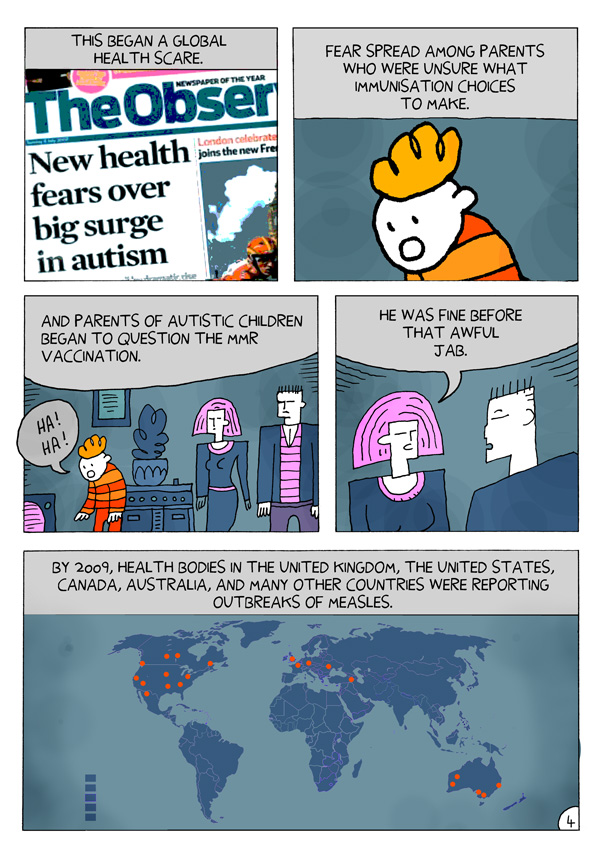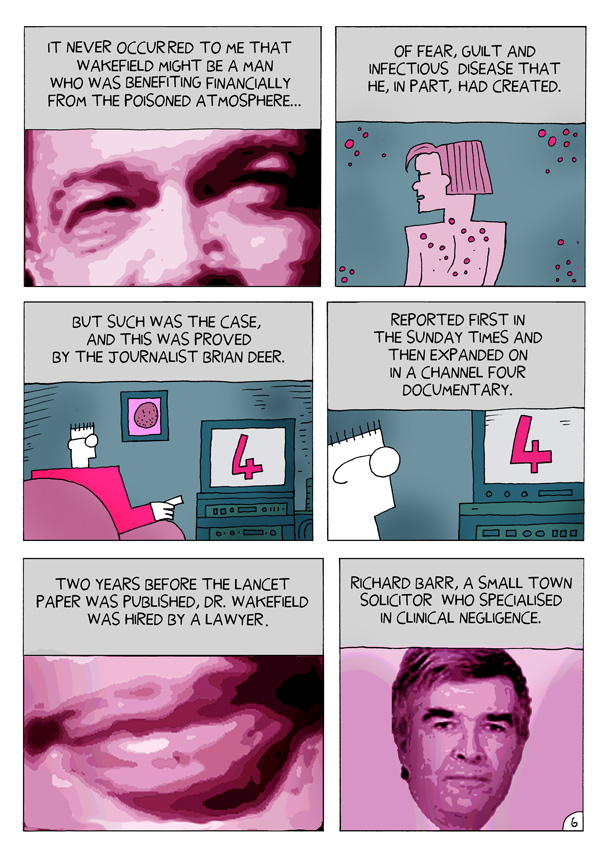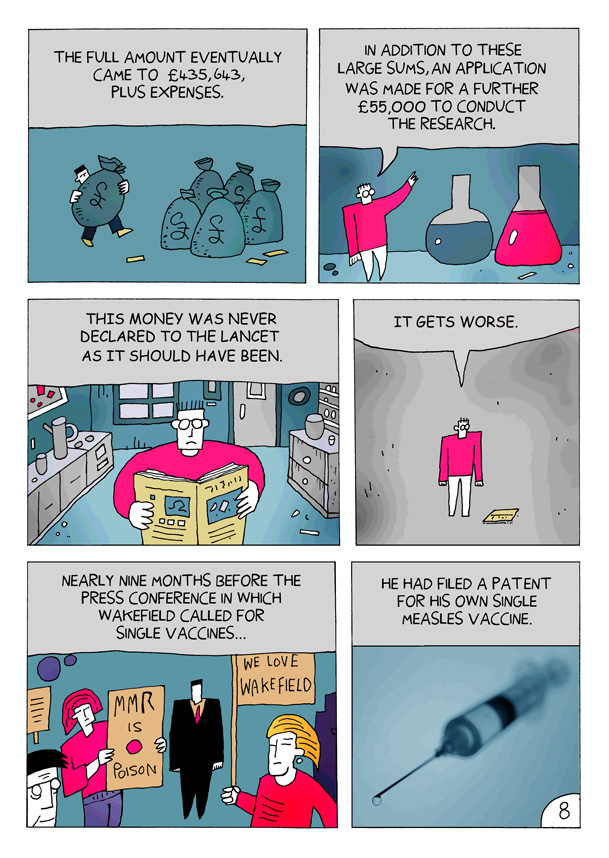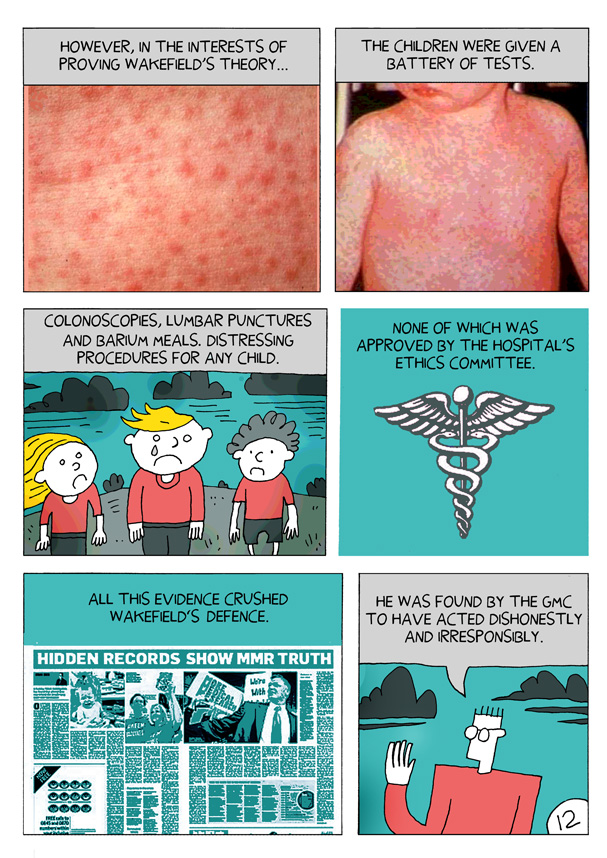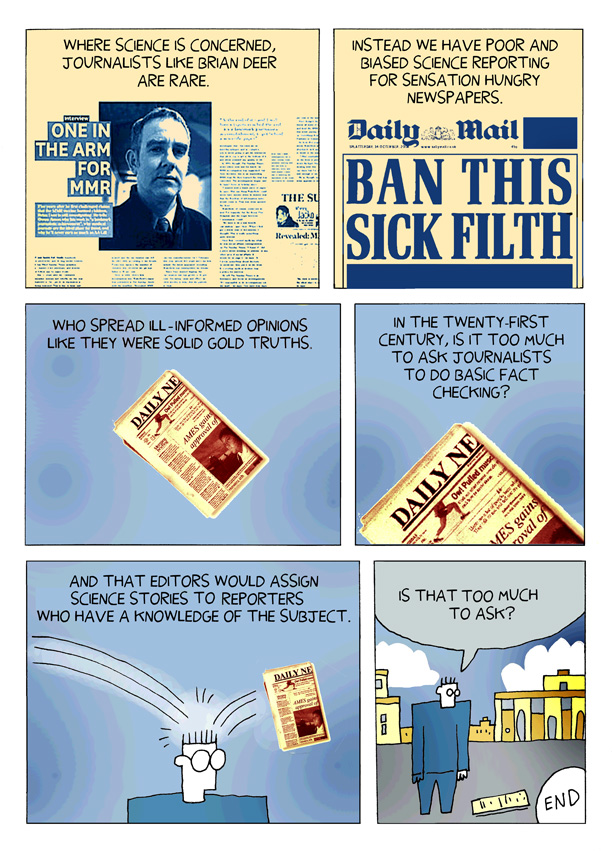Just wanted to start up an old tradition that I had going here that I sort of let fall by the wayside. I won't be doing this daily due to schedule constraints (unless someone else decides to follow my format).
Mathematicians Offer Elegant Solution to Evolutionary Conundrum
ScienceDaily (Apr. 25, 2010) — UBC researchers have proffered a new mathematical model that seeks to unravel a key evolutionary riddle--namely what factors underlie the generation of biological diversity both within and between species.
Evolutionary biologists have long recognized that the emergence of rare traits within a population can spur diversity. For example, being one of a few under-sized predators in a population dominated by larger-sized predators can offer advantages--access to an abundance of small prey--and increase the likelihood of that trait prospering in the population.
"But existing mathematical models that incorporate these 'rare type' advantages tend to have some serious shortcomings," says Michael Doebeli, a researcher at UBC's Biodiversity Research Centre and professor with the departments of Mathematics and Zoology. "They rely on single traits--like body size--and predict that the advantage offered by that trait has to be very significant in order to maintain large amounts of diversity."
So Doebeli and research associate Iaroslav Ispolatov applied a new model to the riddle, which they outline in the journal Science.
Building on classical competition models for single traits, they designed their mathematical theory to gauge the evolutionary impact of multiple traits in concert, and found that adding this layer of complexity significantly lowered the threshold for the maintenance of diversity and the evolution of new species.
"When you model one trait at a time--in isolation--you often find that ecological interactions aren't strong enough to drive divergence. But with many traits acting in concert, even very weak interactions can generate diversity. Our approach mirrors the complexity of reality more closely--if you think about it, all living organisms have at least dozens, if not hundreds, of ecologically relevant traits," says Doebeli.
Mathematically, the biological phenomenon is reflected in fundamental properties of eigenvalues of quadratic forms. The theory would help explain the extraordinary amount of diversity found in many ecosystems, for example in the microbial world of oceans. In fact, the initial proving ground for the model might well be microbial populations.
"It would be interesting to to test whether at the genetic level, pathways controlling different traits are regulated in concert to enable the inheritability of diversifying traits along multiple phenotypic axes."
Pre-History of Life: Elegantly Simple Organizing Principles Seen in Ribosomes
ScienceDaily (Apr. 13, 2010) — With few exceptions, all known forms of life on our planet rely on the same genetic code to specify the amino acid composition of proteins. Although different hypotheses abound, just how individual amino acids were assigned to specific three-letter combinations or codons during the evolution of the genetic code is still subject to speculation.
Taking their hints from relics of this evolution left behind in modern cells, researchers at the Salk Institute for Biological Studies concluded that after only two waves of "matching" and some last minute fiddling, all 20 commonly used amino acids were firmly linked with their respective codons, setting the stage for the emergence of proteins with unique, defined sequences and properties.
Their findings, which will be published in next week's online edition of the Proceedings of the National Academy of Sciences, provide the first in vivo data shedding light on the origin and evolution of the genetic code.
"Although different algorithms, or codes, were likely tested during a long period of chemical evolution, the modern code proved so robust that, once it was established, it gave birth to the entire tree of life," says the study's lead author Lei Wang, Ph.D., an assistant professor in the Chemical Biology and Proteomics Laboratory.
"But the universality of the code makes it very hard for researchers to study its formation since there are no organisms using a primitive or intermediate genetic code that we could analyze for comparison," he explains.
Cells provide a dazzling variety of functions that cover all of our body's needs, yet they make do with a very limited number of molecular building blocks. With few exceptions, all known forms of life use the same common 20 amino acids -- and only those 20 -- to keep alive organisms as diverse as humans, earthworms, tiny daisies, and giant sequoias.
Each of the 20 amino acids is matched to its own carrier molecule known as transfer RNA (tRNA). During protein synthesis, which is coordinated by so-called ribosomes, amino acids are brought out one by one by their respective tRNAs and inserted in the growing protein chain according to the instructions spelled out in the universal language of life -- the genetic code. The code is "read" with the help of anticodons embedded in each tRNA, which pair up with their codon-counterparts.
Several hypotheses have been put forward to explain why codons are selectively assigned to specific amino acids. "One of the theories, the stereochemical hypothesis, gained some traction when researchers could show that short codon- or anticodon-containing polynucleotide molecules like to interact with their respective amino acids," says graduate student and first author David B. F. Johnson.
If chemical or physical interactions between amino acids and nucleotide indeed drove the formation of the genetic code, Johnson reasoned, then he should be able to find relics of this mutual affinity in modern cells. He zoomed in on ribosomes, large complexes consisting of some 50 proteins interacting closely with ribosomal RNAs.
"Also, the ribosome emerged from an early evolutionary stage of life to help with the translation of the genetic code before the last universal common ancestor," explains Wang, "and therefore is more likely to serve as a molecular fossil that preserved biological evidence."
When Wang and Johnson probed bacterial ribosomes for imprints of the genetic code, they found evidence that direct interactions between amino acids and nucleotide triplet anticodons helped establish matching pairs. "We now believe that the genetic code was established in two different stages," says Johnson.
Their data does not shed much light on the early code, consisting of prebiotically available amino acids -- the kind generated in Stanley Miller's famous "zap"-experiment. But once some primitive translational mechanism had been established, new amino acids were added to the mix and started infiltrating the genetic code based on specific amino acid/anticodon interactions.
"We found evidence that a few amino acids were reassigned to a different codon but once the code was in place it took over," says Johnson. "It might not have been the best possible solution but the only one that was viable at the time."
The work was supported in part by the Searle Scholar Program, the Beckman Young Investigator Program and the National Institutes of Health Director's New Innovator Award.
Rewiring of Gene Regulation Across 300 Million Years of Evolution
ScienceDaily (Apr. 12, 2010) — Researchers from Cambridge, Glasgow and Greece have discovered a remarkable amount of plasticity in how transcription factors, the proteins that bind to DNA to control the activation of genes, maintain their function over large evolutionary distances.
The text books tell us that transcription factors recognise the genes that they regulate by binding to short, sequence-specific lengths of DNA upstream or downstream of their target genes. It was widely assumed that, like the sequences of the genes themselves, these transcription factor binding sites would be highly conserved throughout evolution. However, this turns out not to be the case in mammals.
Reporting in the journal Science, the authors traced the evolution of gene regulation by comparing the binding of evolutionarily conserved transcription factors in the genomes of five vertebrate species -- human, dog, mouse, short-tailed opossum and chicken -- spanning 300 million years.
In all tested species, the transcription factors CEBPA and HNF4A are master regulators of liver-specific genes. By mapping the binding of CEBPA and HNF4A in the genomes of each species and comparing those maps, they found that in most cases neither the site nor the sequence of the transcription factor binding sites is conserved, yet despite this, these transcription factors still manage to regulate the largely conserved gene expression and function of liver tissue.
Paul Flicek, leader of the Vertebrate Genomics Team at EMBL-EBI, an outstation of the European Molecular Biology Laboratory, and coauthor on the paper said "The evolutionary changes in transcription factor binding in the five species have left clues that we can use to explain how function is preserved but not necessarily sequence. What we have learnt is that although the transcription factors regulate similar target genes in all five species, the binding events underpinning this regulation have not been conserved as the species diverged."
"By studying changes in transcription factor binding, we can understand the evolution of gene regulation," said Duncan Odom from Cancer Research UK Cambridge Research Institute and coauthor on the paper. He continued: "Differences in gene regulation are central to explaining differences between species, and gene misregulation is a key causative factor in diseases like cancer."
The results reveal that sequence conservation is not the whole story when it comes to maintaining tissue-specific gene regulation.
New Insights Into the Implications of Autism Onset Patterns
ScienceDaily (Apr. 24, 2010) — Kennedy Krieger Institute has announced new study results showing that when and how autism symptoms appear in the first three years of life has vital implications to a child's developmental, diagnostic, and educational outcomes. Published this month in the Journal of Autism and Developmental Disorders, this study found children with early developmental warning signs may actually be at lower risk for poor outcomes than children with less delayed early development who experience a loss or plateau in skills.
Researchers collected data from 2,720 parents through the Interactive Autism Network, the nation's largest online autism research project. Through custom questionnaires and standardized rating scales, researchers examined differences in early milestone achievement (e.g., first words, walking, phrase speech, etc.), autism symptom severity and diagnosis, and educational supports between children with three different patterns of autism symptom onset:
- Regression (n=44%): A loss of previously acquired social, communication or cognitive skills prior to 36 months
- Plateau (n=17%): Display of only mild developmental delays until the child experiences a gradual to abrupt developmental halt that restricts further advancement of skills
- No Loss and No Plateau (n=39%): Display of early warning signs of autism spectrum disorders without loss or plateau
Results from the study, currently the largest to have examined regression in autism spectrum disorders, provides strong evidence for poorer developmental outcomes in children who experienced regression, a controversial topic among autism researchers. More specifically, children with regression had a significant increase in severity of autism symptoms, the greatest risk for not attaining conversational speech, and were more likely than any other group to require increased educational supports. These findings were markedly worse for the children whose parents reported the regression as severe.
This study was also one of the first to examine the implications of developmental plateau, which tended to occur around the child's second birthday. When compared to children with No Loss and No Plateau, these children were more likely to need educational supports and receive an autistic disorder diagnosis, which is typically more severe than other diagnoses on the autism spectrum (i.e., Asperger's syndrome or Pervasive Developmental Disorder -- Not Otherwise Specified). Children with No Loss and No Plateau were at the least risk for poor outcomes.
"Children who plateau or regress have a later manifestation of autism, but when it manifests it devastates their development," said Dr. Paul Law, corresponding study author and Director of the Interactive Autism Network at Kennedy Krieger. "Children with developmental plateau are an especially under-researched group, and these findings have important implications for those designing and prioritizing clinical evaluations."
Previous studies have reached a variety of different conclusions concerning outcomes for children with regression. Some research has found these children fared worse in the long-term, while other studies found no differences in outcome between these children and those without regression. In examining these discrepancies, the current study suggests researchers who require children to have near typical development prior to regression may be missing the most severely impaired children in their findings. In fact, 35 percent of parents in this study had concerns about their child's general development before they noticed the more obvious signs of skill loss.
"Parents have good instincts when it comes to their children," said Dr. Rebecca Landa, co-author and director of Kennedy Krieger's Center for Autism and Related Disorders. "If they're concerned, they shouldn't wait to see a professional for immediate in-depth screening and developmental surveillance. We know from other research that the sooner you can diagnose autism and start intervention, the better the child's outcomes."
In addition to Landa and Law, authors of this paper are Luther Kalb and J. Kiely Law, both of Kennedy Krieger Institute. Lead author, Luther Kalb, will present these findings in May 2010 at the International Meeting for Autism Research in Philadelphia, PA.
This research study was supported by grants from Autism Speaks.
About Autism
Autism spectrum disorders (ASD) is the nation's fastest growing developmental disorder, with current incidence rates estimated at 1 in 100 children. This year more children will be diagnosed with autism than AIDS, diabetes and cancer combined, yet profound gaps remain in our understanding of both the causes and cures of the disorder. Continued research and education about developmental disruptions in individuals with ASD is crucial, as early detection and intervention can lead to improved outcomes in individuals with ASD.
Dual Approach Gives a More Accurate Picture of the Autistic Brain
ScienceDaily (Apr. 22, 2010) — A new study, the first of its kind, combines two complementary analytical brain imaging techniques, to provide a more comprehensive and accurate picture of the neuroanatomy of the autistic brain. The study, published in the April issue of neuroimaging journal Human Brain Mapping, was conducted by researchers at The Montreal Neurological Institute and Hospital -- The Neuro, McGill University and the Université de Montréal. The findings provide critical insight into autism and possible markers for the disease for use in early therapy and therapeutic strategies.
Autism is a complex spectrum disorder thought to affect 1 in 166 people. Autistic individuals have difficulties with social interaction, communication and repetitive behaviours, which can lead to isolation and emotional problems. They may also have enhanced abilities particularly in auditory and visual perception.
Although structural brain differences have been reported in autism, the reports are inconsistent. The Neuro research team's objective therefore was to investigate neuroanatomical differences using a dual-analytic approach, combining cortical thickness analysis (CT) and voxel-based morphometry (VBM) together for the first time in the same participants. The team studied a group of young adults with autism of average intelligence and similar language ability relative to closely matched typically developing controls.
"The findings are significant from a functional perspective because the anatomical differences are found in brain regions known to play a functional role in the core features of autism such as social communication and repetitive behaviours, says Dr. Krista Hyde, research fellow with Dr. Alan Evans at The Neuro, and lead investigator in the study. "This is the first step to looking for clues or markers that would help us correlate structural differences with functional and behavioural characteristics."
The advantage in analyzing brain anatomy using CT and VBM is the complementary nature of the two methods, which in combination provide a direct measure of cortical grey matter, regions of the brain that consist primarily of nerve cell bodies. The combined method also provides a measure of subcortical grey matter as well as white matter, regions of the brain composed mainly of nerve cell fibres which have myelin sheaths, the protective covering that insulates and supports nerve cells. "The converging results found from CT and VBM analysis, allows us to make more confident interpretations about the structural brain differences found in autism," adds Dr. Hyde.
Regional differences in grey matter were found in socially-relevant and communication-related brain areas, as well as in areas implicated in repetitive behaviours and those found to play a role in empathic behavior. The study also identifies grey matter increases in autism in the visual cortex and for the first time, in the primary auditory cortex. "We believe that the visual and auditory cortical thickness increases may be related to enhanced visual and auditory perception in autism."
"These new results are extremely important because they offer a more accurate picture of the autistic brain, helping researchers improve early autism treatment strategies," says Dr. Anthony Phillips, Scientific Director of the Canadian Institutes of Health Research (CIHR) Institute of Neurosciences, Mental Health and Addiction. "Autism rates have been rising steadily in Canada, so CIHR is proud to support researchers who devote their time to look into this neurological condition."
The study's findings provide vital insight into autism by identifying structural differences in functionally relevant areas of the brain in a group of individuals with autism using a dual analytic approach for the first time.
The study was funded by The Canadian Institutes of Health Research.
Guillain-Barré Syndrome Cases Low After 2009 H1N1 Vaccine
ScienceDaily (Apr. 21, 2010) — A new study finds that reports of a neurologic disease called Guillain-Barré syndrome (GBS) have been low after 2009 H1N1 vaccination, according to a research study that will be presented as part of the late-breaking science program at the American Academy of Neurology's 62nd Annual Meeting in Toronto, April 10 -- 17, 2010. The study is one of the first national reports of the occurrence of GBS after 2009 H1N1 vaccination.
GBS is a rare disorder in which the body's immune system attacks part of the peripheral nervous system, causing tingling and weakness of the arms and legs. While it is not fully known what causes GBS, it is known that about two-thirds of people who get GBS do so several days or weeks after they have been sick with diarrhea or a respiratory illness. Except for the swine flu vaccine used in 1976, no other influenza vaccines have been clearly linked to GBS. It was not anticipated that the 2009 H1N1 vaccine would be associated with an increased risk of GBS.
Scientists analyzed information obtained from the Centers for Disease Control and Prevention and US Food and Drug Administration Vaccine Adverse Event Reporting System (VAERS) and found that there were 35 reports of GBS following 2009 H1N1 vaccination around the country by the end of the year 2009. This amounts to 3.5 reports of GBS per 10 million people vaccinated. All cases of GBS except one were reported within six weeks of vaccination, with 23 cases reported within the first two weeks after vaccine administration. One report of death and one of disability were reported in the 33 patients who were hospitalized.
The number of GBS cases reported by the same researcher was only slightly higher after seasonal flu vaccination in 2009: 57 reports of GBS were received by VAERS , an estimated rate of 7.3 reports of GBS per 10 million vaccinations. The rate of GBS in the general population is estimated to be between one to four cases per 100,000 persons per year.
"Although preliminary, these reported cases of GBS do not appear to show an increased risk of GBS following vaccination with either the 2009 H1N1 or the seasonal flu strain and the safety record for these vaccines is excellent," said study author Nizar Souayah, MD, with New Jersey Medical School in Newark. "CDC, FDA and neurologists around the world are continuing to closely monitor people after vaccination for this disease."
Since VAERS receives voluntary reports of adverse events from manufacturers, providers, vaccines, and caregivers, cases of illness may be either over or underreported, and calculation of actual rates is not possible. VAERS cannot determine cause-and-effect, and an adverse event report only indicates that the event occurred sometime after vaccination. The American Academy of Neurology, along with the Centers for Disease Control and Prevention reached out to neurologists in the fall of 2009, requesting that they report to VAERS any possible new cases of GBS following receipt of vaccination.
